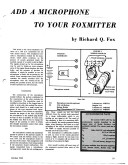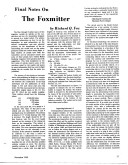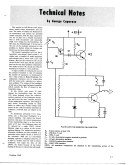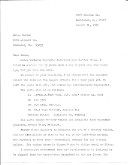This page will give prospective teams some examples of payloads to get the creative juices flowing.
Biological Projects:
1. Find out how the forces associated with launch and landing would affect fish or frog eggs.
Obtain some fish or frog eggs from a science supply house. Save half of them as a control. Fly the other half as the experiment group. Hatch all the eggs and look for any differences between the two groups.
Note that Tripoli and NAR safety codes prohibit flying any vertebrate animals larger than a small fish.
2. Find out if the forces associated with launch and landing would affect where earthworms would travel.
Construct several sealed containers of soil with earthworms, each identical except for where the soil is moist. Normally the worms want to go towards the moisture but g-forces might make the worms move differently.
3. Send up some live brine shrimp (Sea Monkeys) to see how they handle the forces.
Physics Projects
1. Determine the relationship between altitude and temperature.
Send up an altimeter and a temperature probe. Graph the relationship between the two.
2. Use small weights to test the tensile strengths of toothpicks, balsa sticks, plastic rods, string, etc.
3. Fly capillary tubes partially filled with liquid to see if the g-forces move the liquid.
4. Fly various consumer electronics and see how they stand up to the forces.
5. Construct a simple accelerometer and record the g-forces during flight.
6. Construct a simple vibration detector and record vibration during flight.
Other Experiments
1. Devices to protect a raw hen’s egg from breaking under the forces of acceleration and deceleration.
2. Devices to protect a hard-boiled egg, including peanut butter and a non-Newtonian fluid (cornstarch and water).
3. Balsa wood structures fitted with weights to test the effects of g forces on the wood.
4. A container of yeast to determine if the expansion of the yeast is different than the expansion of a control group on the ground.
5. A fertilized chicken egg, to determine the effects of high gravitational forces on embryonic life.
6. A clock, to determine if the forces affect the time.
7. Tubes of shaving cream, cornstarch and water, jello, and some liquids stacked by density (alcohol, water, corn syrup, baby oil, cooking oil).
8. A hand-held GPS unit which will record the flight data for subsequent analysis of altitude and flight track.
9. A spring-powered device designed to actuate a servo.
Sample Instruments
Back in the late 1960’s Model Rocketry Magazine published a series of articles on building a transmitter small enough to be carried in a model rocket. This transmitter has a number of plug in sensors that can be used with it. The links below are for just the articles, if you are interested in seeing more of the magazine, go to the site www.ninfinger.org.
 |
 |
 |
 |
 |
 |
 |
 |
The above links are to PDF files you will need a copy of Adobe Reader to view them. Obviously since these articles were first printed in 1969 some of the parts used may be slightly different that those available today. However, the basic electronics are still just as correct today as they were then. It should not be too much trouble to adapt the circuits to the devices that are available today.
